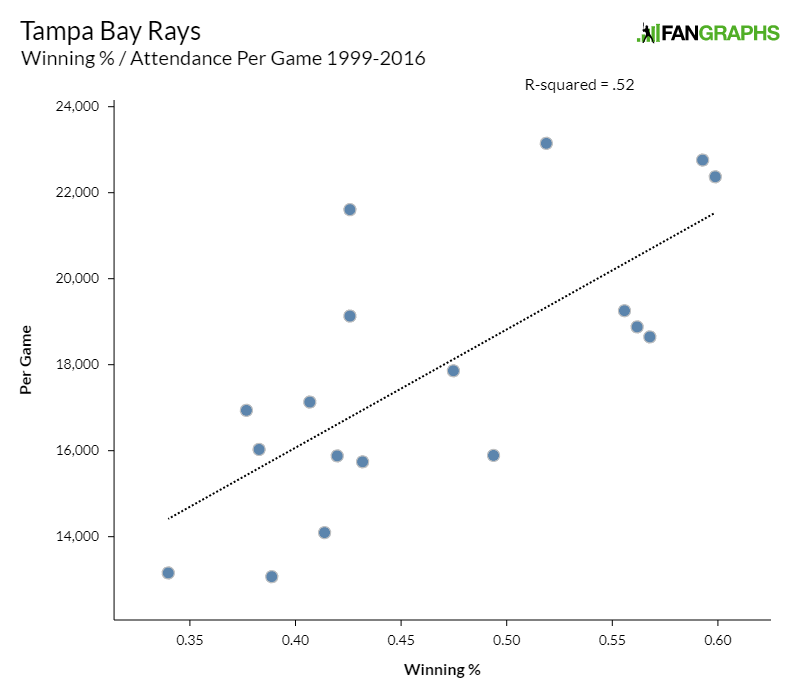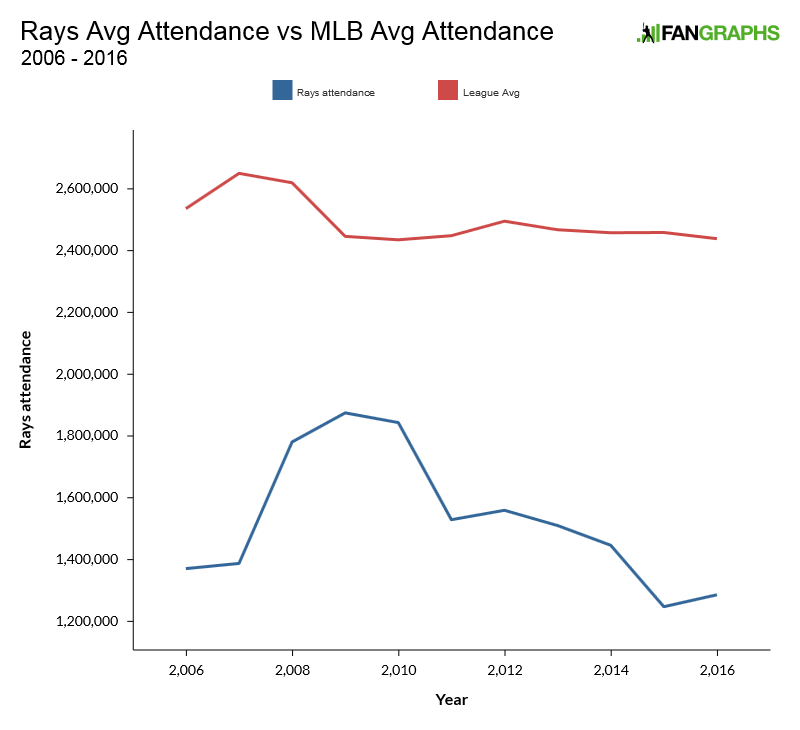This is Michael Lortz’ fourth piece as part of his June residency at FanGraphs. Lortz covers the Tampa Bay baseball market for the appropriately named Tampa Bay Baseball Market and has previously published work in the Community pages, as well. You can find him on Twitter, as well. Read the work of all our residents here.
There’s been a lot of circumstantial and empirical evidence showing winning baseball games has an effect on the amount of tickets purchased in subsequent games. In 2008, Michael Davis of the Department of Economics at the University of Missouri-Rolla (now Missouri S&T) concluded that team success leads to greater attendance. However, Davis’s study had a huge flaw. He limited his study to “only the ten major league baseball teams that have played in the same city for over 100 years. This list includes five National League teams: the Chicago Cubs, Cincinnati Reds, Philadelphia Phillies, Pittsburgh Pirates and St. Louis Cardinals; and five American League teams: the Boston Red Sox, Chicago White Sox, Cleveland Indians, Detroit Tigers and New York Yankees.”
For the sake of determining whether wins matter, that’s way too small of a sample size. Davis might have had enough data points, but his data points were not representative of the wide array of situations with which franchises must contend.
In 2012, Dan Lependorf wrote a post for The Hardball Times concerning the relationship between wins, attendance, and payroll. Whereas Davis went deep in time for a few teams, Lependorf analyzed every team from 2000 to 2011. Lependorf concluded that the relationship between wins and attendance produced an R-squared of .27. There was an even stronger correlation to attendance and wins the previous season (R-squared = .3). Attendance in a season featured an even stronger relationship to attendance level in the previous season (R-squared = .8).
Every sports team in every city will draw at least one fan. In Major League Baseball, we can also guarantee that every team will win at least one game. We can also guarantee a top level of attendance depending on the maximum capacity of the stadium. For the Rays, that would be 40,135 times 81 — or 3,250,935. And, of course, the most wins the Rays can have in the regular season is 162.
Since 1999 (excluding their inaugural season), the Rays have averaged 1.4 million fans and 75 wins per season. They’ve had eight seasons over 75 wins and nine seasons over 1.4 million fans. Since 1999, the correlation between the Rays’ winning percentage and attendance per game produces an R-squared value of .52.

That is almost double the correlation Davis found for teams. So despite the claims that wins don’t matter to attendance in Tampa Bay, they do. To a point.
Read the rest of this entry »




